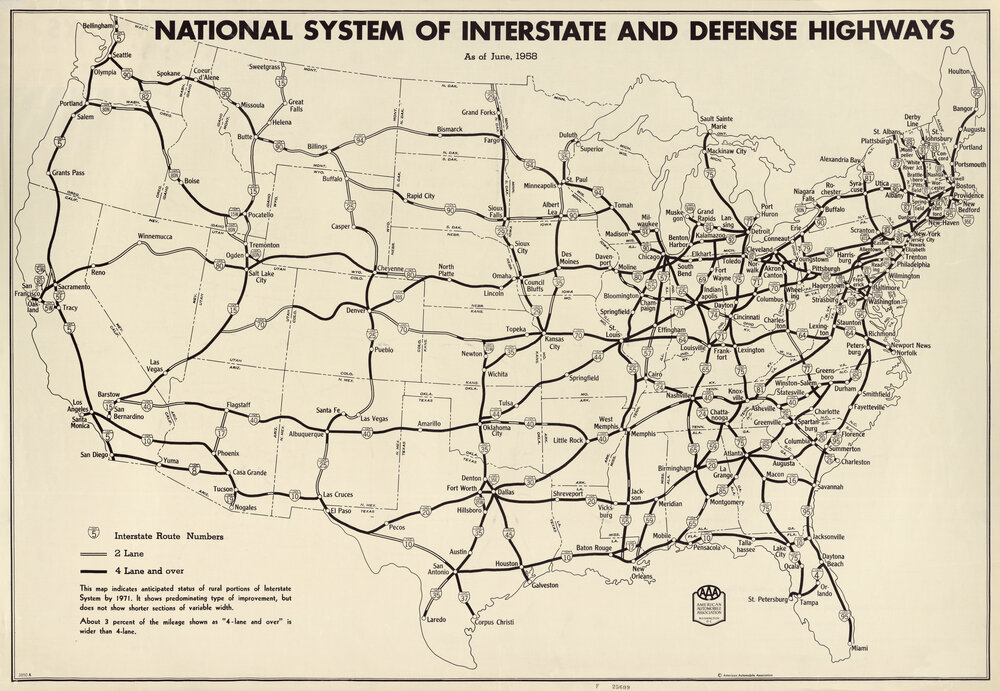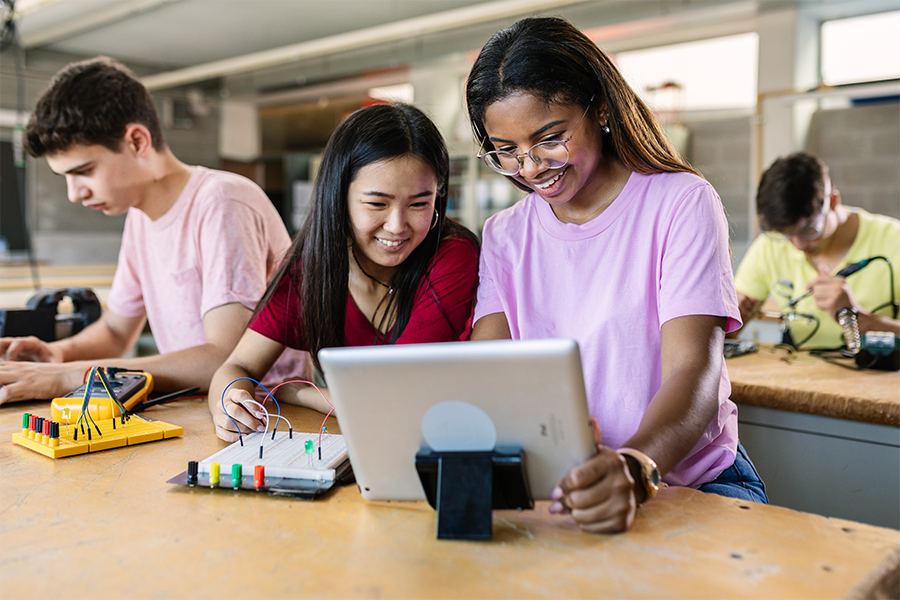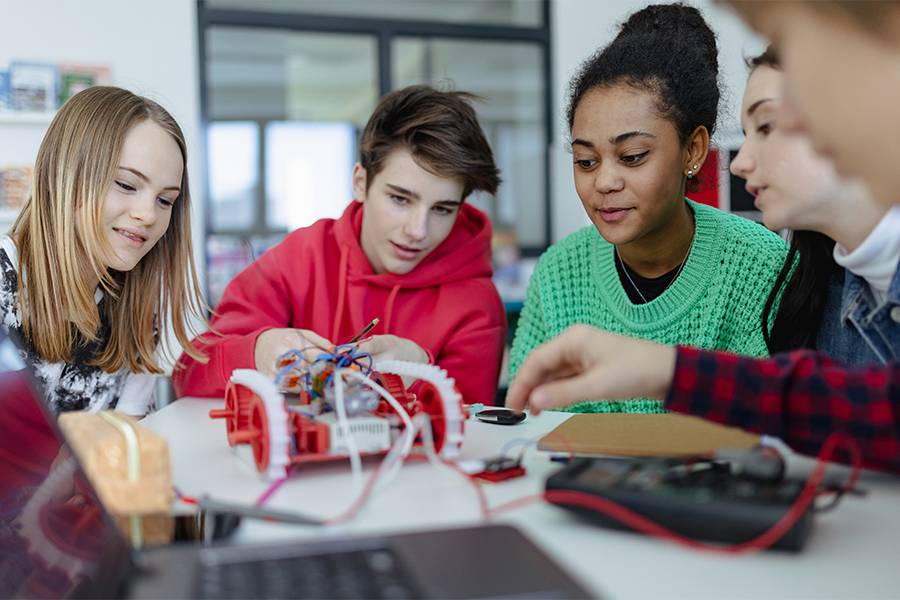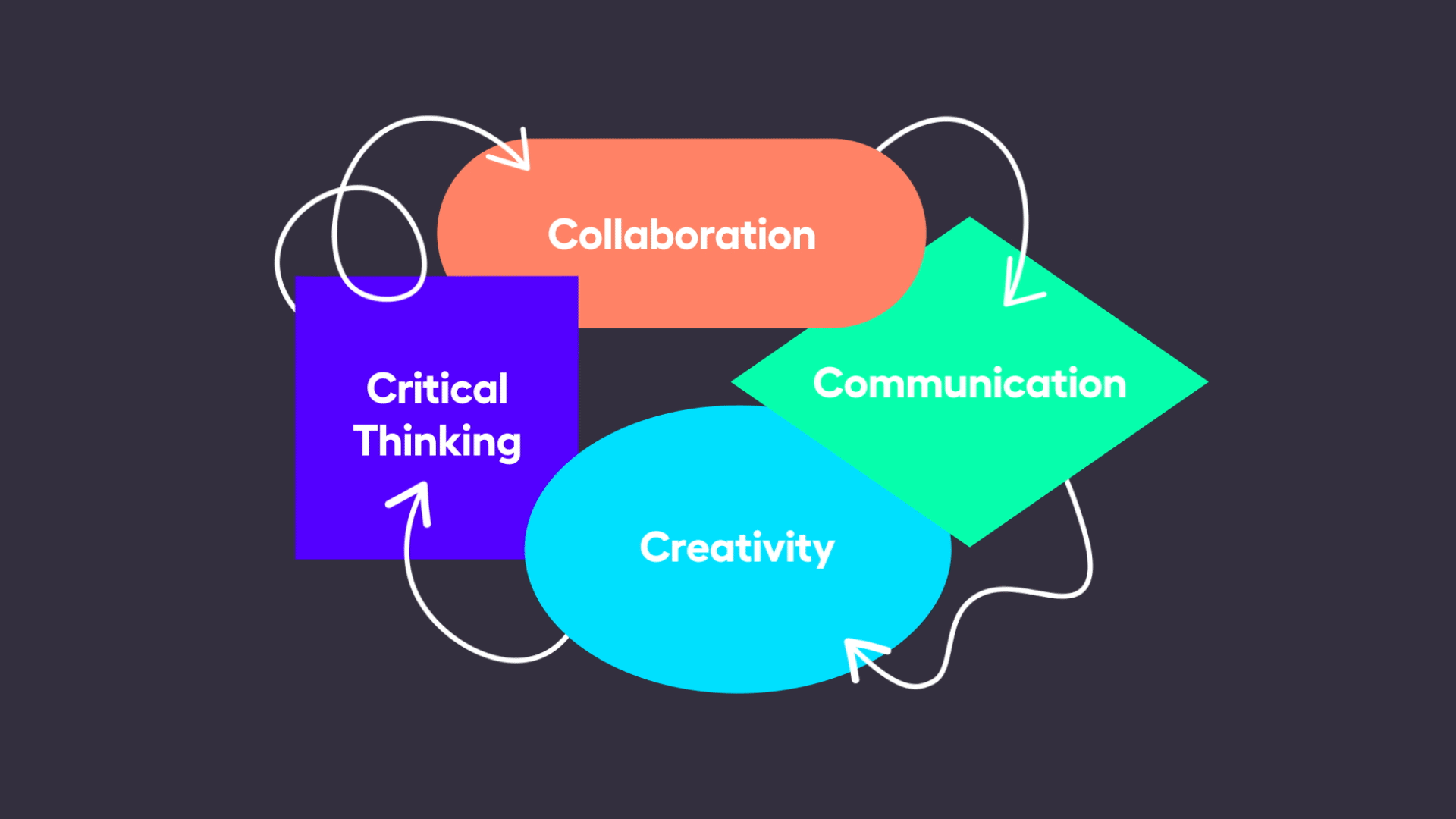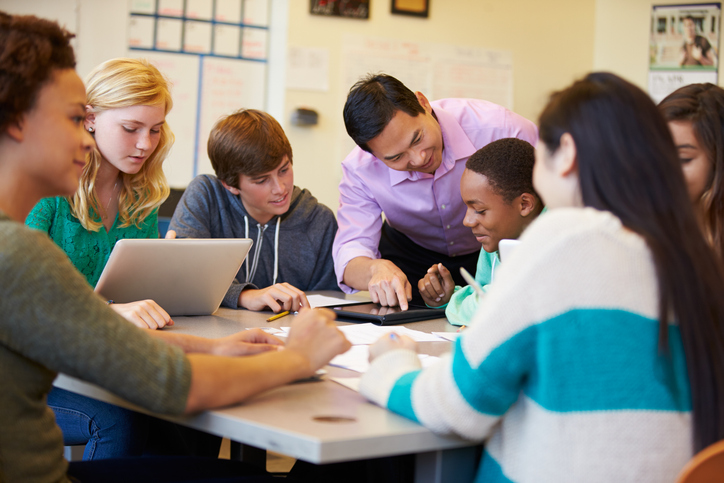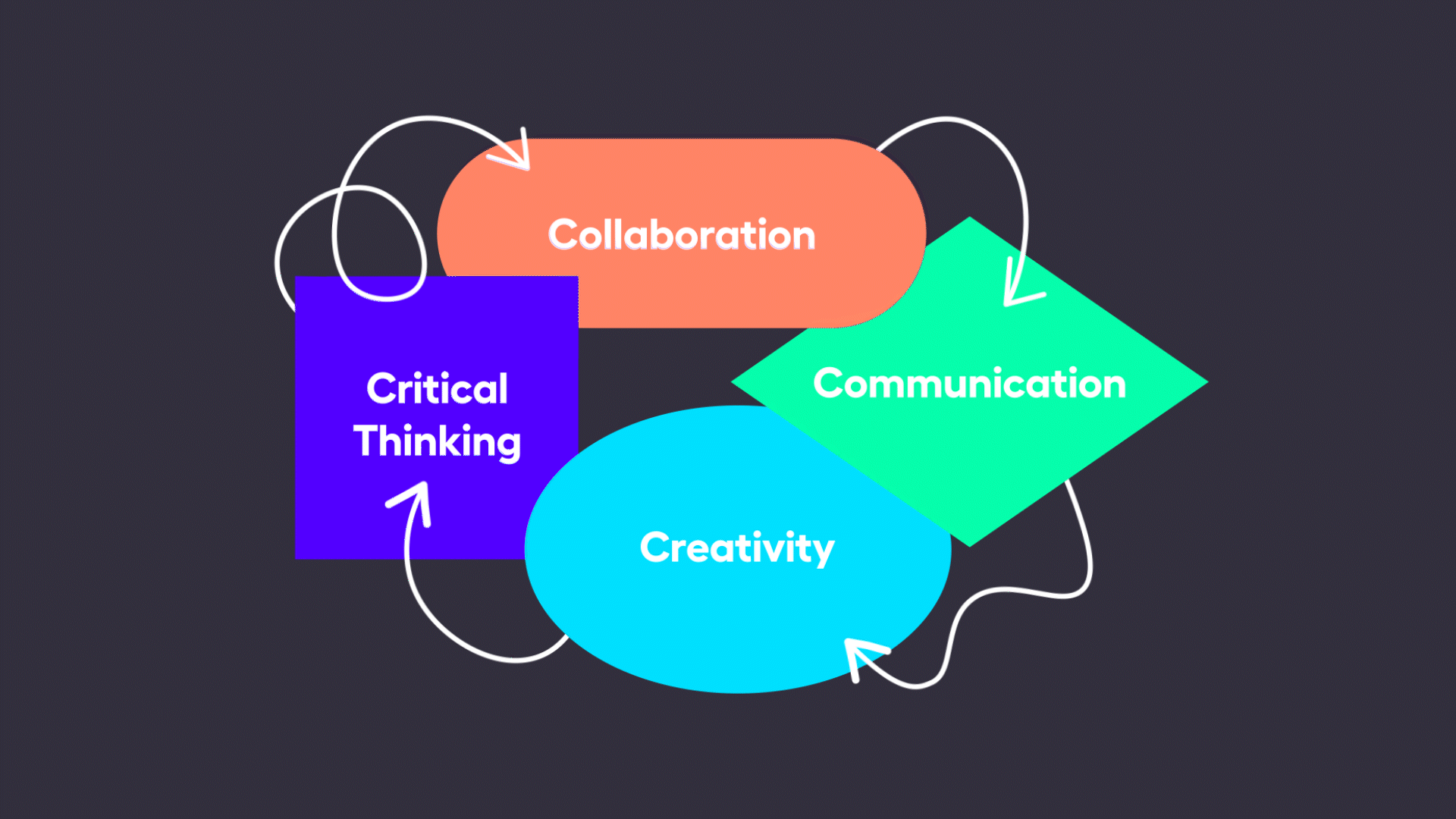Tempe, Arizona, May 6, 2024 – Imagine Learning, the largest provider of digital curriculum solutions in the U.S., serving over 15 million students in more than half the school districts nationwide, today announced the winners of the 2023–2024 Imagine Nation Awards, honoring schools and districts across America for their exemplary implementation of Imagine Learning solutions and commitment to student learning. The Imagine Nation Awards are part of the Imagine Learning motivational program, igniting engagement and strengthening confidence for all learners. More than 38,000 schools and districts throughout the U.S. were eligible for the Imagine Nation Award.
“Working hand-in-hand with educators to implement innovative digital curriculum programs that empower teachers and truly make a difference for their students is incredibly rewarding,” shared Sari Factor, Vice Chair and Chief Strategy Officer. “It’s an honor to see the dedication from schools across the country and to be part of their journey to success.”
Based on rigorous research, Imagine Learning has found that meeting program usage and implementation goals is directly associated with increased student success and academic growth. The Imagine Nation Award is presented to schools and districts that demonstrate outstanding commitment to the effective implementation of an Imagine Learning program throughout the year. Today, 220 schools and districts are receiving the honor of being named an Imagine Nation school for the 2023-2024 school year.
Following official notification of the Imagine Nation Awards, each winning school or district will receive an Imagine Learning banner that displays their achievement.
2024 IMAGINE NATION AWARDS
Imagine Edgenuity®
- Marbury High School, Autauga County Board of Education, AL
- Lauderdale County Virtual Academy, Lauderdale County School District, AL
- Altitude Academies, FL
- Alexander W. Dreyfoos Jr. School of The Arts, Palm Beach County, FL
- Royal Palm Beach Community High, Palm Beach County, FL
- 8th Grade Charter College & Career Academy, Coweta County School System, GA
- Lansing High School, Lansing USD 469, KS
- Cadillac High School, Cadillac Area Public School District, MI
- Cumberland Polytechnic High School, Cumberland County School District, NC
- CCTL (Early College), Iredell-Statesville School District, NC
- Albuquerque School of Excellence, NM
- Stillwater High School, Stillwater Public Schools, OK
- Byrnes High, Spartanburg District 5, SC
- Valor College Prep, Valor Collegiate Academies, TN
- Crosby Crossroads Academy, Crosby ISD, TX
- Crosby High School, Crosby ISD, TX
- W. B. Bizzell Academy, Navasota ISD, TX
- Austin Academic Center, Sulphur Springs ISD, TX
- Triumph Public High School—El Paso West, Triumph Public High Schools, El Paso, TX
- Tabiona School, Duchesne County School District, UT
Imagine Learning EL Education
- Grant County Schools, KY
- Webster County School District, KY
- Jefferson County Public Schools, KY
- Westford Public Schools, MA
- Detroit Public Schools Community District, MI
Imagine Español®
- Saint Matthews Catholic School, The Roman Catholic Diocese of Phoenix, AZ
- Van Buskirk Elementary, Tucson Unified School District, AZ
- Ronald Reagan Elementary, Desert Sands USD, CA
- Mendota Elementary, Mendota USD, CA
- Honey Hollow Elementary, Moreno Valley USD, CA
- Pueblo Vista Elementary, Napa Valley USD, CA
- Georgia Brown Elementary, Paso Robles USD, CA
- Braden River Elementary, Manatee County Schools, FL
- Holy Cross School, Diocese of Ft Wayne-South Bend Schools, IN
- Grant Elementary, Grant Public Schools, MI
- Grant Primary, Grant Public Schools, MI
- Ford Early Learning Center, Ypsilanti Community Schools, MI
- Frank Porter Graham Elementary, Chapel Hill-Carrboro City Schools, NC
- Central Elementary, Angleton ISD, TX
- Mahaffey Elementary, Klein ISD, TX
- Nitsch Elementary, Klein ISD, TX
- Roth Elementary, Klein ISD, TX
- Southside Elementary, Palestine ISD, TX
- Anita Scott Elementary, Royse City ISD, TX
- Fort Elementary, Royse City ISD, TX
- Finley Elementary, United ISD, TX
- Franklin D Roosevelt Elementary, United ISD, TX
- Juarez Lincoln Elementary, United ISD, TX
- Kazen Elementary, United ISD, TX
- Newman Elementary, United ISD, TX
- Rodolfo C. Centeno Elementary, United ISD, TX
- Ruiz Elementary, United ISD, TX
- Zundy Elementary, Wichita Falls ISD, TX
- Cannan Elementary, Willis ISD, TX
Imagine IM
- Crane Elementary School District, AZ
- Ceres Unified School District, CA
- Iowa City CSD, IA
- Curé of Ars Catholic School, KS
- Jefferson County Public Schools, KY
- Cambridge Public Schools, MA
- Birmingham Public Schools, MI
- Fort Zumwalt School District, MO
- Hilliard City Schools, OH
- Louisville City School District, OH
- Bellevue School District, WA
- Evergreen School District, WA
- Lake Washington School District, WA
Imagine Instructional Services
- Bridgeway Academy, AZ
- AEA – Dubuque CSD, IA
- Hampton-Dumont CSD, IA
- Leland Public School District, MI
- Northville Public School District, MI
- Royal Oak School District, MI
- Saline High School, Saline Area Schools, MI
- Wise Academy, MI
- Portageville School District, MO
- Carl Junction R-I School District, MO
- Park Hill School District K-12, MO
- The Wellspring Schools, NY
- Union Public Schools, OK
- Cocalico School District, PA
- Pennsbury School District, PA
- Loudoun County Public Schools, VA
- Sequim School District, WA
- Menominee Indian School District, WI
- Weston County School District 1, WY
Imagine Language & Literacy®
- Brewbaker Primary, Montgomery Public Schools, AL
- Catoma Elementary, Montgomery Public Schools, AL
- Chisholm Elementary, Montgomery Public Schools, AL
- Mary Welty Elementary, Nogales Unified School District, AZ
- Tropical Elementary, Broward County Schools, FL
- Citrus Park Elementary, Hillsborough County Public Schools, FL
- Jessie P Miller Elementary, Manatee County Schools, FL
- Lee Middle, Manatee County Schools, FL
- Summerville Advantage Academy, Miami-Dade County Public Schools, FL
- William A. Chapman Elementary, Miami-Dade County Public Schools, FL
- Cypress Trails Elementary, Palm Beach County Schools, FL
- Hammock Pointe Elementary, Palm Beach County Schools, FL
- Deep Springs Elementary, Fayette County Public Schools, KY
- Littlefield Middle, Public Schools of Robeson County, NC
- Prairie Elementary, Guymon Public Schools, OK
- Tschetter Colony Elementary, Freeman Public School District 33-1, SD
- Castle Heights Elementary, Lebanon Special School District, TN
- Mighty B Academy, Mighty B Academy District, TX
- Idaho, Venture Upward, LLC, WY
Imagine Math® 3+
- Francisco Vasquez De Coronado Elementary, Nogales Unified School District #1, AZ
- Downtown Miami Charter School, Charter Schools USA, FL
- Hollywood Academy of Arts and Science-Elementary, Charter Schools USA, FL
- North Broward Academy of Excellence-Elementary, Charter Schools USA, FL
- Renaissance Elementary Charter School, Charter Schools USA, FL
- Renaissance Charter School at West Palm Beach, Charter Schools USA, FL
- Robert Healy Elementary, Chicago Public Schools, IL
- Sanborn Elementary, Alpena Public Schools, MI
- STEAM Academy Middle, Ferguson-Florissant School District R2, MO
- Armando Cerna Elementary, Eagle Pass ISD, TX
- Ray H. Darr Elementary, Eagle Pass ISD, TX
- IDEA Hidden Meadow Middle, IDEA Public Schools, TX
- IDEA McAllen Middle, IDEA Public Schools, TX
- IDEA Robindale Middle, IDEA Public Schools, TX
- Rancho Verde Elementary, Los Fresnos CISD, TX
- Hays Elementary, Rockwall ISD, TX
- Sheppard AFB Elementary, Wichita Falls ISD, TX
- Burton Elementary, Davis School District, UT
- Mountain View Elementary, Davis School District, UT
- Bluff Elementary, San Juan School District, UT
- Pioneer Valley Elementary, Bethel School District 403, WA
Imagine Math Facts®
- Kaibeto Boarding School, Kaibeto Boarding School District, AZ
- Potlatch Junior-Senior High, Potlatch School District #285, ID
- New Groningen Elementary, Zeeland Public Schools, MI
- Z-Quest, Zeeland Public Schools, MI
- Lesterville Elementary, Lesterville R-IV District, MO
- Dexter Elementary, Walthall County School District, MS
- Cranfills Gap School, Cranfills Gap ISD, TX
- Lazbuddie School, Lazbuddie ISD, TX
- Mighty B Academy, Mighty B Academy District, TX
Imagine Math® PreK-2
- Downtown Miami Charter School, Charter Schools USA, FL
- Melaleuca, 21st Century of Palm Beach, FL
- Henderson Hammock Charter School, Charter Schools USA, FL
- Innovation Preparatory Academy, Charter Schools USA, FL
- Mid Cape Global Academy, Charter Schools USA, FL
- Renaissance Elementary Charter School, Charter Schools USA, FL
- Renaissance Charter School at Tradition, Charter Schools USA, FL
- Bayou Boeuf Elementary, Lafourche Parish School District, LA
- Sanborn Elementary, Alpena Public Schools, MI
- Central Elementary, Yukon Public Schools, OK
- Shedeck Elementary, Yukon Public Schools, OK
- Onida Elementary, Agar-Blunt-Onida School District 58-3, SD
- Bill Brown Elementary, Comal ISD, TX
- Comal Creek Elementary, Comal ISD, TX
- Kinder Ranch Elementary, Comal ISD, TX
- Ray H. Darr Elementary, Eagle Pass ISD, TX
- Rosita Valley Elementary, Eagle Pass ISD, TX
- Villareal Elementary, Los Fresnos CISD, TX
- Scobee Elementary, Northside ISD, TX
- Bridge Elementary, Bridge Elementary Charter, UT
Imagine MyPath®
- Ascension Leadership Academy, AL
- Pine Level Elementary, Autauga County Board of Education, AL
- Prattville Elementary, Autauga County Board of Education, AL
- Prattville Primary, Autauga County Board of Education, AL
- Cedar Ridge Elementary, Cedar Ridge School District, AR
- Don Tyson School of Innovation, Springdale Public Schools, AR
- Discovery Bay Elementary, Byron Union School District, CA
- Alpha Learning Academy, Alpha Learning Academy District, FL
- Banner Lake Academy – School, Banner Lake Academy – District, FL
- Compass Outreach and Education Center, Compass Outreach and Education Center District, FL
- Legends Academy, Orange County Public School District – Private/Charter, FL
- Toccoa Elementary, Stephens County Schools, GA
- Graden Elementary, Park Hill School District, MO
- Hawthorn Elementary, Park Hill School District, MO
- Union Chapel Elementary, Park Hill School District, MO
- St John’s Lutheran School, St John’s Lutheran School District, MO
- Winona Elementary, Winona-Montgomery Consolidated School District, MS
- Mullen Elementary, Mullen School District 1, NE
- Seward Elementary, Seward Public Schools, NE
- Holy Cross School, Diocese of Trenton Catholic Schools, NJ
- Urbana Elementary, Urbana City Schools, OH
- Lake Carolina Elementary – Lower, Richland School District 2, SC
- Homelife Academy, Homelife Academy District, TN
- Balmorhea School, Balmorhea ISD, TX
- Clyde Intermediate, Clyde CISD, TX
- Comanche Elementary, Comanche ISD, TX
- Crestview Elementary, Graham ISD, TX
- Bluff View Elementary, Prairie Du Chien Area School District, WI
- The Lincoln Academy, WI
Imagine Purpose™
- Dardanelle High School, Dardanelle School District, AR
- Safford High School, Safford Unified School District 1, AZ
- Yucaipa Connected Academy, Yucaipa-Calimesa Joint USD, CA
- Richmond Hill High School, Bryan County School District, GA
- Coastal Plains High School, Coastal Plains Education Charter High School, GA
- West Ada School House, West Ada School District, ID
- Youth Advancement Academy, Youth Advancement Academy (Micase), MI
- Lake View High School, San Angelo ISD, TX
Imagine Robotify®
- Mammoth-San Manuel PreK–12 School, Mammoth-San Manuel USD 8, AZ
- Coatimundi Middle, Santa Cruz Valley USD 35, AZ
- Home Gardens Academy, Corona-Norco USD, CA
- Vista Preparatory Academy, Red Bluff Union Elementary School District, CA
- Portal Middle High School, Bulloch County School System, GA
- William James Middle, Bulloch County School System, GA
- Calhoun County Middle, Calhoun County Schools, GA
- Newburg Middle, Jefferson County Public Schools, KY
- Stuart Academy, Jefferson County Public Schools, KY
- Raceland-Worthington Middle, Raceland Worthington ISD, KY
- Whitehall High, Whitehall, MT
- Deming Intermediate, Deming Public School District, NM
- Eagle Ridge Middle, Rio Rancho Public Schools, NM
- Mountain View Middle, Rio Rancho Public Schools, NM
- Aubrey Middle, Aubrey ISD, TX
- Myra Green Middle, Raymondville ISD, TX
- Texas Leadership of San Angelo, Texas Leadership Public Schools, TX
Twig® Science
- Exeter Unified School District, CA
- San Lorenzo Unified School District, CA
- Envision Education, CA
- St Joachim School, Diocese of Oakland School Department, CA
- Santa Rosa Academy, CA
- Riverdale Joint Unified, CA
- Pueblo County District 70 – Villa Bella Expeditionary, CO
- Our Lady of The Wayside, Archdiocese of Chicago Catholic Schools, IL
- Community Consolidated School District 46, IL
- Saint Pius X Catholic School – Indianapolis, IN
- Metropolitan School District of Lawrence Township, IN
- Geary County USD 475, KS
- Grand Haven Area Public Schools, MI
- Norfolk Public School, NE
- Sanborn Regional School District, NH
- Broken Arrow School District, OK
- Berkeley County Schools, WV
About Imagine Learning
Every classroom, every student is bursting with potential. That’s why we pursue relentless innovation at the intersection of technology, people, and curricula. Imagine Learning creates K–12 digital-first solutions fueled by insights from educators, working alongside educators to support 15 million students in over half of the districts nationwide. Imagine Learning. Empower potential. Learn more: https://www.imaginelearning.com.
